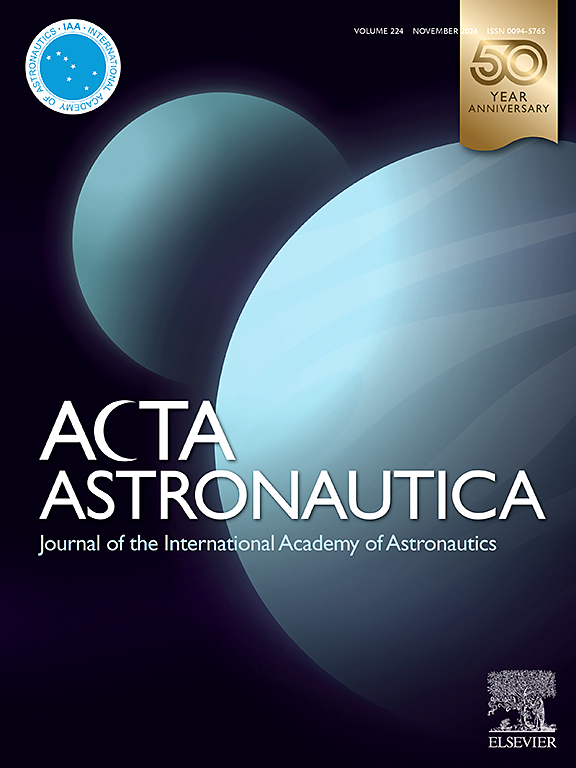Hypergolic ignition of green propellant: Testing of 90 % hydrogen peroxide with paraffin wax including sodium borohydride
IF 3.1
2区 物理与天体物理
Q1 ENGINEERING, AEROSPACE
引用次数: 0
Abstract
Solid paraffin wax doped with sodium borohydride powder can achieve hypergolic ignition in contact with 90 % hydrogen peroxide. This phenomenon is mainly due to the intense redox reaction of sodium borohydride with 90 % hydrogen peroxide, which exotherms and increases the ignitability in solid paraffin fuels. In this study, drop-on-solid tests were conducted under atmospheric conditions to quantify the ignition delay time, which was observed to be lower than 5 ms, indicating that hypergolic ignition in this innovative system is both rapid and efficient, and to characterize the spontaneous ignition behavior. The results obtained confirm the practical feasibility of hypergolic ignition for the selected propellant combinations. In this study, a hybrid rocket motor prototype was designed for engine firing test, and the results showed that the engine combustion efficiency was higher than 87 % under low oxidant-fuel ratio conditions. Its low-delay characteristic makes it suitable for use in areas requiring fast response such as satellite attitude and orbit control.
求助全文
约1分钟内获得全文
求助全文
来源期刊

Acta Astronautica
工程技术-工程:宇航
CiteScore
7.20
自引率
22.90%
发文量
599
审稿时长
53 days
期刊介绍:
Acta Astronautica is sponsored by the International Academy of Astronautics. Content is based on original contributions in all fields of basic, engineering, life and social space sciences and of space technology related to:
The peaceful scientific exploration of space,
Its exploitation for human welfare and progress,
Conception, design, development and operation of space-borne and Earth-based systems,
In addition to regular issues, the journal publishes selected proceedings of the annual International Astronautical Congress (IAC), transactions of the IAA and special issues on topics of current interest, such as microgravity, space station technology, geostationary orbits, and space economics. Other subject areas include satellite technology, space transportation and communications, space energy, power and propulsion, astrodynamics, extraterrestrial intelligence and Earth observations.
 求助内容:
求助内容: 应助结果提醒方式:
应助结果提醒方式:


